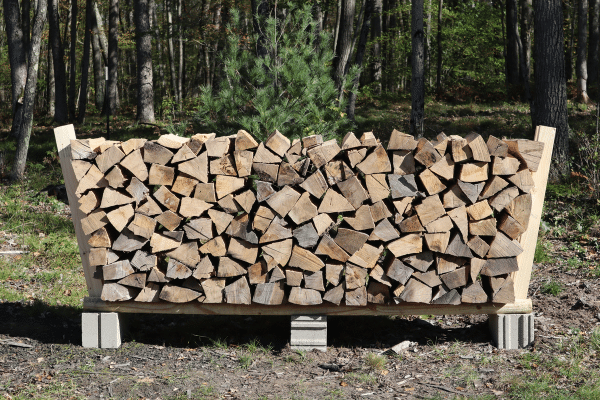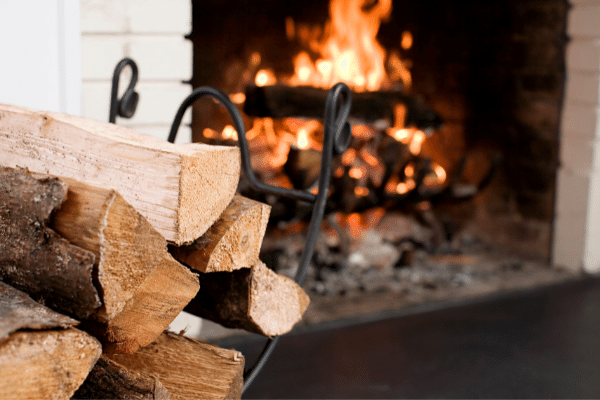- Home
- Types Of Firewood
- Is Oak Good Firewood
Is Oak Good Firewood
This post may contain affiliate links so I earn a commission.
Is oak good firewood?
The quick answer to that question is a resounding, “yes!”
But if you’re wondering why exactly that is the case, this article will tell you everything you need to know.
Winter is slowly (but steadily) approaching, and it’s time to start preparing your home for warmth and coziness for the season.
One of the best types of firewood to use throughout the winter is oak, but why is that exactly?
We’ll be happy to explain!
Oak Firewood - Everything You Need To Know
There are over 600 species of oak that are deciduous and a few of these species are evergreen.
The United States has approximately 55 species, with many of them sharing the same characteristics.
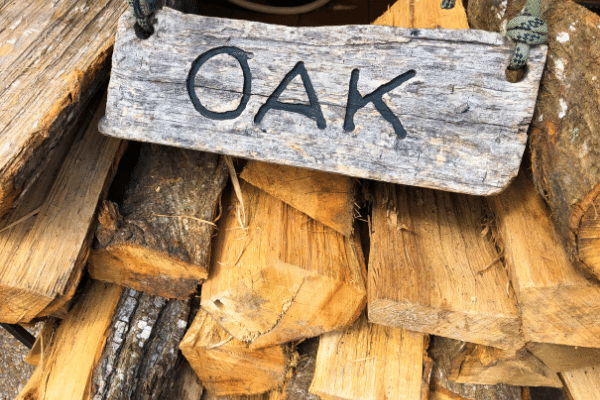
Here is a list of some of the species that are
currently within the United States:
- Southern live oak
- Gambel oak
- Black oak
- Scarlet oak
- Buckley oak
- White oak
- Red oak
- And many more!
For those of you who may be new to spotting oak trees, the best way to identify one is by looking for acorns.
Many animals also eat acorns, such as deer, squirrels, and raccoons.
White oak trees are known to produce a better tasting acorn than red oak because they're less bitter.
Is Oak Good Firewood - Which Type Is Best?
As we talked about earlier, there are many different kinds of oak trees you can choose from, but which one is the best?
There are actually two kinds of oak that are great for firewood: white oak and red oak.
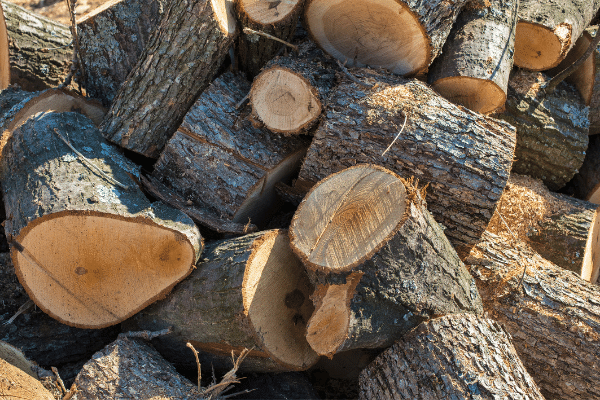
Wood from red and white oak trees has remarkable density, making it strong and a great firewood choice.
The heat output for white and red oak firewood
is the highest out of all of the other oak types, which is exactly what you’re
looking for when you're trying to warm up your home for those cold and freezing
days.
Is Oak Good Firewood To Split?
Splitting wood can take a lot of strength, and depending on the kind you have, it can also take a lot of time.
Luckily though, oak firewood won’t give you that kind of trouble.
Oak firewood is known for being relatively easy to split.

Although some large rounds with knots can be difficult, a good splitting axe like the Fiskars x27 Super Splitter works great for splitting oak firewood.
This is another good reason why oak would be great to use for your home in the winter.
How Long Does Oak Firewood Take To Season?
When it comes to seasoning oak firewood, the seasoning process takes a long time for it to fully cure.
When using the air-drying method, it can take between 6 months to 2 years for it to be fully seasoned.
When your oak firewood is still green, it has a high moisture content.
This can be as high as 80%.
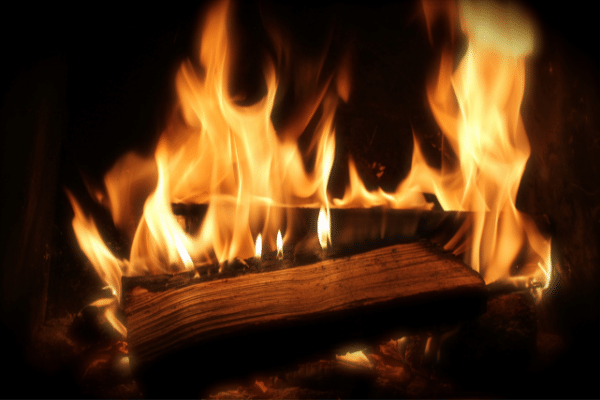
Therefore, allowing it to
dry for six months or longer (ideally two years) will drop that moisture
content down to preferred levels which is around 20% or lower.
For those of you who might not have the patience to wait this long for your oak to cure, there is a way you can speed it up.
All you have to do is split it into smaller sections, which can cut down the curing time dramatically, but it also increases the amount of firewood you burn since the smaller pieces burn at a faster rate.
Does Burning Oak Create Creosote?
Some of you may be concerned about whether oak firewood can create creosote or not.
No matter what kind of wood it may be, all wood types can create creosote.
However, oak is less likely to produce creosote than other types of firewood.
The only thing to watch out for is that oak can burn slower and lower, causing the smoke to linger and creating build-up for creosote in your chimney.
The best way to reduce the creosote that is produced is by seasoning your wood correctly and by making sure you don't damper your wood stove down too much.
Is Oak Good Firewood To Burn Indoors?
Oak also makes for a great indoor firewood.
It produces minimal smoke and creates great coals.
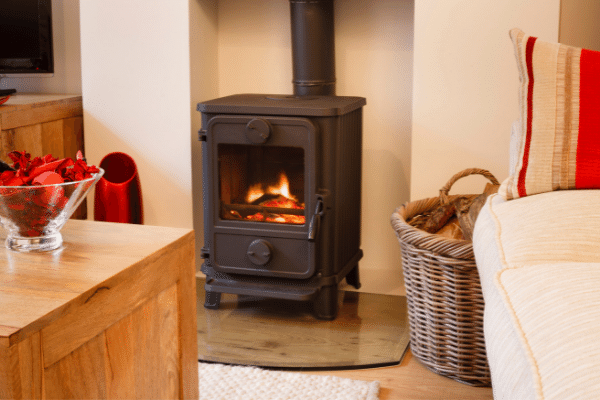
It also doesn’t spark very much and the BTU
(British Thermal Unit) is 26.4 million, which produces great heat output to heat your home on the coldest winter nights.
Whether you heat your home with a wood stove or fireplace, oak is a great choice.
Is Oak Good Firewood - Pros vs Cons
Even though oak has amazing characteristics that can certainly qualify it as one of the best firewood choices, unfortunately it also comes with its cons as well.
Let’s elaborate a little bit more about the pros and cons of oak firewood.
Kind of recapping on what we’ve already discussed, some of the best pros of having oak for firewood is the heat output.
The amount of heat that it produces while burning is enough to warm up your entire home.
It also creates a steady flame and burns slowly, so you don’t have to constantly add wood to your fire, making it an excellent choice for overnight burns.
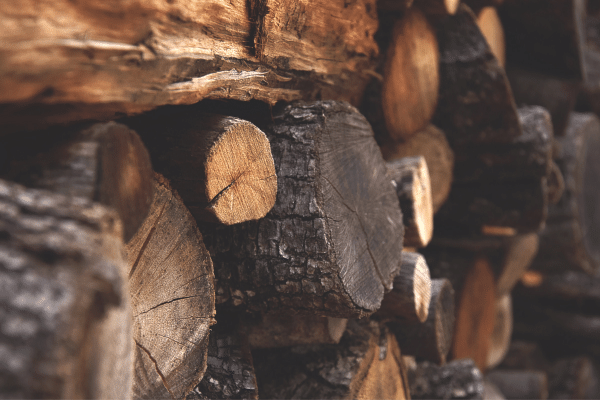
The only con that comes with having oak
firewood is the amount of time it takes to season it.
The six to 24 month period can take a long time to get your firewood to burn properly.
To decrease the amount of time it takes to season the wood, stack the wood in a sunny location, elevate the wood off the ground so it doesn't soak up ground moisture, and split the wood into smaller pieces.
Just remember, the smaller pieces will burn faster and won't create a good, overnight burn like a large piece of seasoned oak.
Alternatives To Burning Oak Firewood
For those of you who may not be set on using oak for firewood, there are other options you can choose from to keep your home nice and warm throughout those cold weather days.
Take a look at the list of alternative you can use for firewood:
- Maple
- Ash
- Beech
- Cherry
- Apple
- Mulberry
- Hawthorn
These different wood types work just as well as oak, with similar burning characteristics.
Is Oak Good Firewood - Overall
Is oak good firewood?
Absolutely.
Oak burns slowly in your stove, creates excellent heat, and is relatively easy to split.
If you're luck enough to have access to oak firewood, you won’t have any regrets!
